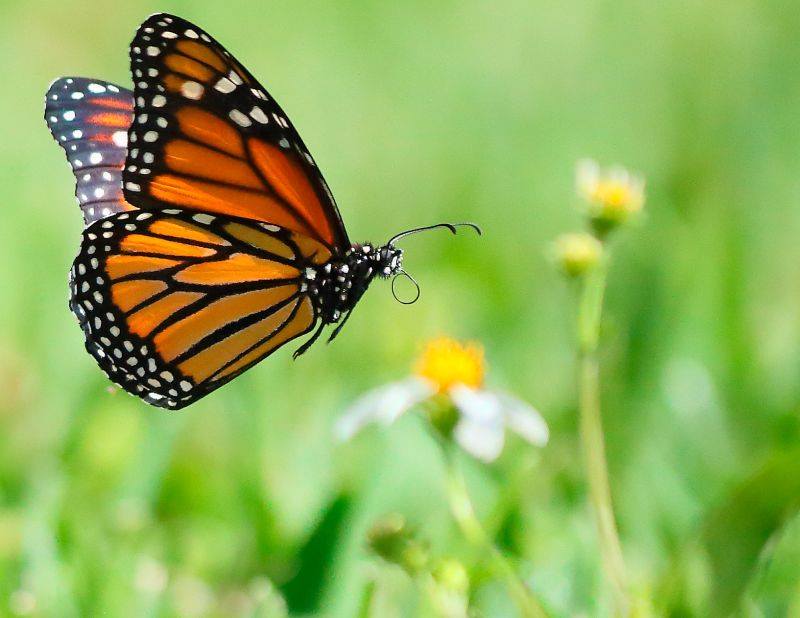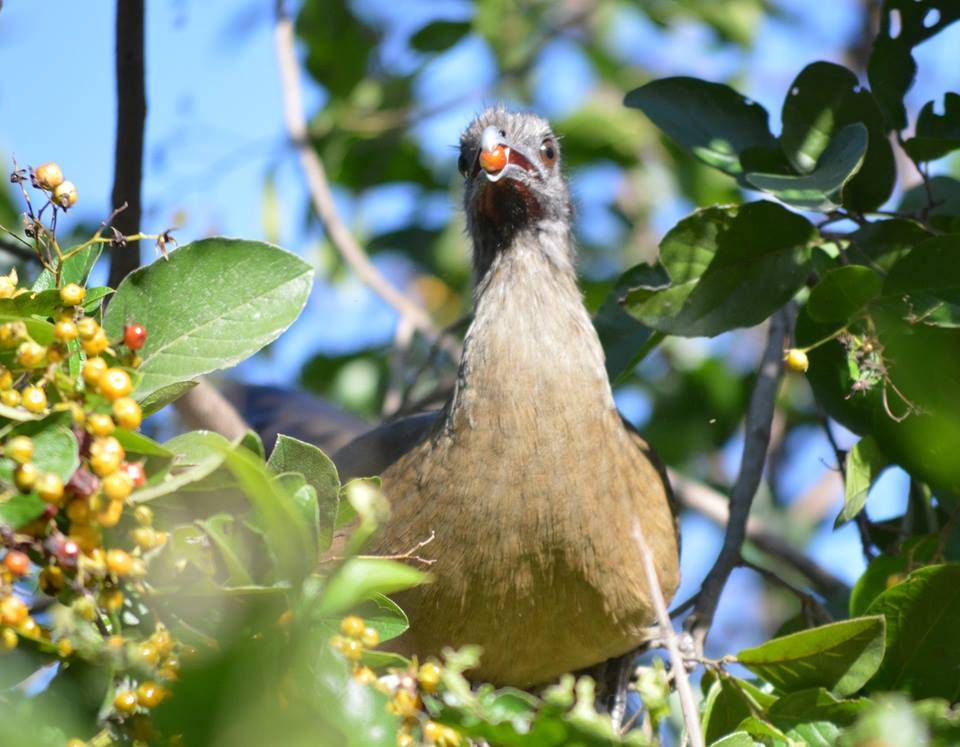/>
UPDATE II:
The National Butterfly Center’s brave and just fight to keep Trump’s wall from ruining this national treasure continues to be in the news.
Watch this report of CNN’s Bill Weir’s visit to the center and his interesting conversation with the Center’s executive director, Marianna Trevino Wright.
Below, an equally interesting video of the center and some of its beauty with groundskeeper Max Muñoz speaking of the Center and of the Wall.
UPDATE I:
While a week ago Friday, Congress included language in its spending package specifically prohibiting construction of a wall, slats, barrier, or “peaches” at the National Butterfly Center and four other Texas ecological and cultural landmarks, it appears that Trump, under his national emergency declaration, can still proceed with such construction.
Stay tuned.
Original Post:
Each autumn, millions of monarch butterflies escape the cold weather in the U.S. and Canada and travel up to 3,000 miles south to Mexico seeking a warmer climate for their winter sojourn.
But, each year, fewer and fewer of these beautiful, delicate creatures participate in the great migration south.
Scientists tell us that the population of monarch butterflies has been steadily declining during the past two decades. While in the mid-1990s the monarch population was estimated at nearly one billion butterflies, today it is down to approximately 93 million butterflies, according to the Center for Biological Diversity.

As with any natural phenomenon, there are several reasons for such an occurrence. Among them
• The heavy use of harmful herbicides in the agricultural Midwest, destroying milkweed flora, essential to the monarch life cycle.
• Illegal deforestation in Central Mexican forests where the butterflies spend the winter, and which serve as “a blanket and umbrella for the butterflies.”
• Extreme weather and perhaps climate change.
Already threatened by so many factors, the monarch butterfly and other species now face another obstacle, a man-made one: Trump’s border wall.
The National Butterfly Center in Mission, Texas, just west of McAllen on the Mexican border, is a 100-acre wildlife facility and botanical garden abutting the Rio Grande. It has become the largest native plant botanical garden in the United States and home to “the greatest volume and variety of wild, free-flying butterflies in the nation,” a Mecca for serious lepidopterists. Please watch the video below.
But it is not just butterflies that make the Center so unique, so valuable.
Luciano Guerra, a nature photographer and educator for the Center (and a lifelong Republican who voted for Donald Trump in 2016), referring to the many young students who visit the Center, explains in the Washington Post:
When they first arrive, some of the children are scared of everything, from the snakes to the pill bugs. Here, we can show them animals that roam free and teach them not to be afraid. We talk about how we planted native vines, shrubs and trees to attract some 240 species of butterflies, as well as dragonflies, grasshoppers and other insects. The bugs brought the birds — including some you can’t see anywhere else in America, like Green Jays and Chachalacas — and from there, the bobcats and coyotes. We want to teach kids what it takes to create a home for all kinds of animals.

Today, the Center is in a life-and-death legal battle with the Trump administration over plans to build a wall that, according to the lawsuit filed by the Center, “would cut off two-thirds of the Butterfly Center, effectively destroying it and leaving behind a 70-acre no-man’s land between the proposed border wall and the Rio Grande.”
Again, Mr. Guerra:
The plan that we’ve seen calls for 18 feet of concrete and 18 feet of steel bollards, with a 150-foot paved enforcement zone for cameras, sensors, lighting and Border Patrol traffic. On the south side of the barrier, flooding will worsen. On the north side, animals (including threatened species like the Texas tortoise and the Texas horned lizard) will be cut off from ranging beyond the wall for feeding and breeding. Flood lighting will disrupt the usual patterns of nocturnal species…
Of course, butterflies can fly over walls or through slats or around “peaches,” or whatever Trump calls his wall — monarch butterflies have been known to soar as high as 10,000 feet.
“The issue is not whether butterflies can fly over a wall, but whether private property (farms, businesses, homes) should be seized and destroyed for a project that does not serve the greater good or enhance national security,” writes the Center.
In addition, a wall will:
• Eradicate an enormous amount of native habitat, including host plants for butterflies, breeding and feeding areas for wildlife, and lands set aside for conservation of endangered and threatened species.
• Create devastating flooding to all property up to 2 miles behind the wall, on the banks of the mighty Rio Grande River.
• Reduce viable range land for wildlife foraging and mating.
• Negatively affect nocturnal and crepuscular wildlife, which rely on sunset and sunrise cues to regulate vital activity.
• Trap animals north of the wall, cutting them off from native habitat and from water in the Rio Grande.
By the way, while most butterflies will have no problem flying over a 30 ft vertical wall of concrete and steel, not all birds will be able to do so. For example, the Center notes, the Ferruginous Pygmy Owl, found on the southern border from Texas to Arizona, only flies about 6 ft in the air.
The National Butterfly Center is not the only natural treasure that will be ruined by Trump’s wall, slats, “peaches,” or “whatever you wanna call it.”
In Texas alone the wall would “slice through” the Santa Ana National Wildlife Refuge and the Bentsen-Rio Grande Valley State Park and run through five other wildlife conservation areas.
But the consequences of Trump’s wall will be felt nation-wide. National Geographic lists six of the potential impacts the wall would have on “one of the most sensitive landscapes in North America.”
A butterfly – a billion of them or a million butterfly lovers – will not stop Trump from building a senseless wall across one of the most diverse ecosystems in North America, barriers that could eventually cost an estimated $25 billion.
But, perhaps, organizations such as the Center for Biological Diversity, the National Butterfly Center and the voices, resolutions and legal actions of and by communities and states along our southern border may prompt our legislators to at least protect our nation’s most diverse and sensitive ecological wonders, convince them to “listen” to the monarch butterfly, “the canary in the coal mine telling us that things are beginning to go really wrong…” and that Trump’s wall will not help matters.
To learn more about the National Butterfly Center, please click here.
Lead photo: Butterfly porcelain painting by author’s wife
Edited to correct a link
















